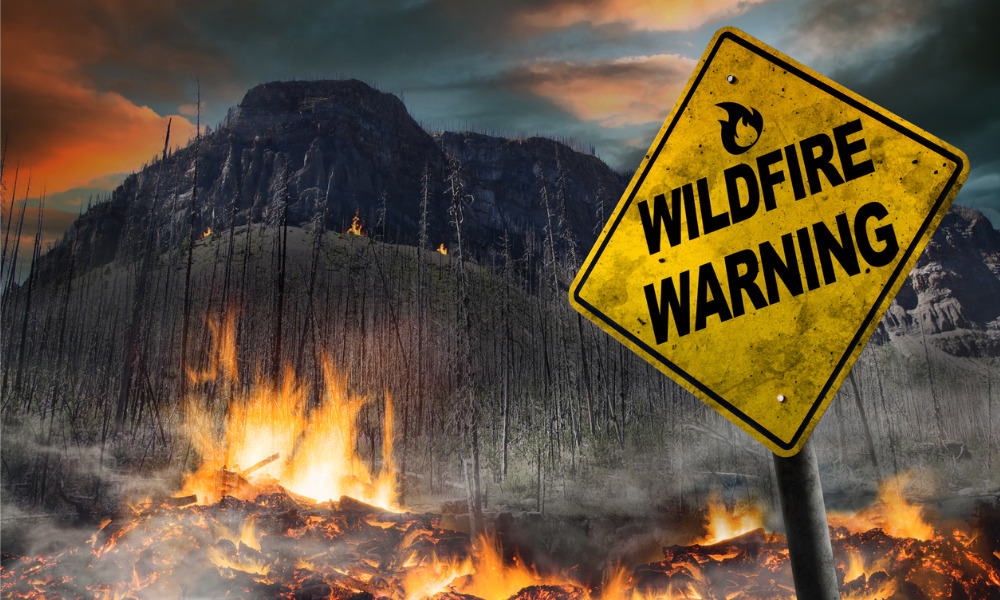Investment experts highlight supply risks and need for 'balanced approach' to energy transition

While the exact humanitarian and economic toll of Canada’s record wildfire season has yet to be tallied, two experts argue that when it comes to its impact on the commodity investment space, the writing’s already on the wall.
“The North American fires and hot dry summer have put pressure on an already-pressured commodity supply – from oil to lumber, minerals to grains,” says Tim Pickering, founder, president, and CIO of Auspice Capital. “This, along with massive demand in the fastest-growing middle class market and now largest global population - India - will drive the second wave of the commodity supercycle.”
In its report on Canadian GDP for the second quarter, Statistics Canada said real GDP was nearly flat in the second quarter, after a 0.6% rise during the previous three months.
Focusing on figures by industry, the national statistics agency cited disruptive wildfire-borne weakness across several sectors, including:
- a 5.7% month-over-month fall in mining and quarrying, including a remarkable 35% drop in iron ore mining traceable to wildfire and maintenance effects;
- a mild 1.1% rise in oil and gas extraction, which only partially made up for a 3.4% May drop due to wildfire-driven production shutdowns;
- a 3.5% quarter-over-quarter decline in the agriculture/forestry/fishing sector, with fires reportedly diving a 4.2% drop in crop production; and
- a 4.5% decline in forestry and logging output due to wildfires.
Commodity pressures: a product of poor policy?
Over the past year, central banks have been attempting to contain inflation through their go-to policy of raising interest rates. But that, Pickering argues, does nothing to neutralize the cost-push inflation driven by commodity cycles and wages.
“The reality is that a lack of broad commodity capital expenditures starting over a decade ago has led to a fragile supply that will continue to be interrupted by things like weather-related events – fire, floods or drought,” Pickering says.
Matt Zabloski, portfolio manager and founder of Delbrook Capital, echoes Pickering’s view that aside from putting pressure on commodities, the wildfires that have exploded across the country point to past shortfalls in policy.
“Around the periphery, you've had shutdowns of operations in Quebec. You've had shutdowns in northern Canada, and you've had shutdowns in Alberta’s oil and gas space,” says Matt Zabloski, portfolio manager and founder of Delbrook Capital.
So far, Zabloski says he’s seen companies cite delays like those in Northern Quebec mentioned in one quarter of earnings reports. One fire in June cut off a highway and rail line between Quebec and Labrador West Northern Quebec, causing damage to a telecommunications tower and a fibre-optic line owned by the Iron Ore Company of Canada, a subsidiary of Rio Tinto.
“I think the forest fires, in some ways, are the direct result of forestry mismanagement, and we’ll continue seeing events like these happen unless something changes,” he says.
While there’s no denying the potential disruptive impact of natural resource development on the environment, Zabloski maintains that if done responsibly, it can offer a net benefit to society. Even as climate-change advocates insist that humanity must let go of its fossil-fuel dependence, he argues humanity’s sheer dependence on commodities makes that an unrealistic dream.
Wanted: a balanced approach to the net-zero transition
Quick to clarify he’s not a climate expert, Zabloski argues that the risk of wildfires to commodities, particularly energy, underscores the need for a balanced approach to accomplishing the net-zero transition.
“I think it shouldn’t be an all-or-nothing situation. I think we need a balanced approach, which will include the use of hydrocarbons for decades to come,” he says. “I think it also requires extraction of natural resources, which we need to have better government support for.”
With that vantage point, Zabloski encourages investors to spend time trying to understand which jurisdictions have policies in place to support a balanced energy transition, and which ones have prohibitive government policies. While developed economies have typically been comparable in terms of their policies for investing in commodity extraction, Zabloski says that has changed materially over the last five years.
“Some jurisdictions are much more friendly today. And some others where we thought obtaining permits would be easy have done almost a complete 180,” he says. “I think investors who want to gain exposure to the traditional energy industry must be more cognizant of the potential impact of government.”
Zabloski acknowledges that by their very nature, commodities as an asset class can show extreme volatility in performance from week to week, or month to month. But by zooming out and taking in a longer-term view, he says investors should see very clear arguments for getting exposure to commodities based purely on supply-side constraints.
“We don’t have access to the same natural resource opportunities that we did 10 or 20 years ago. I think the market, which is generally very short term-focused, is underestimating the risk of depletion and its impact on supply,” he says. “I think if you take a longer time horizon as an investor, it’ll become much more evident to you why this asset class probably needs a greater weighting in portfolios.”



